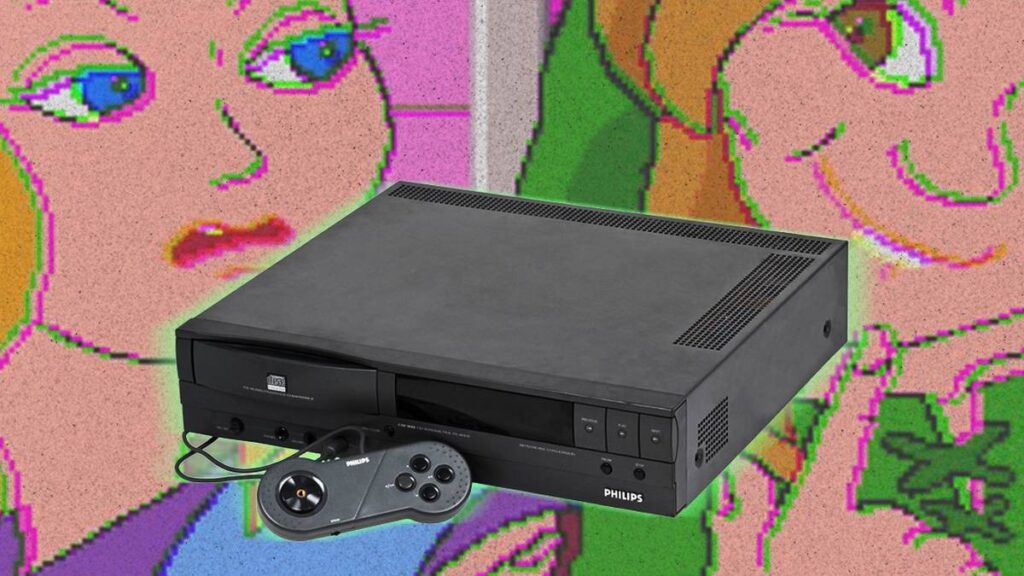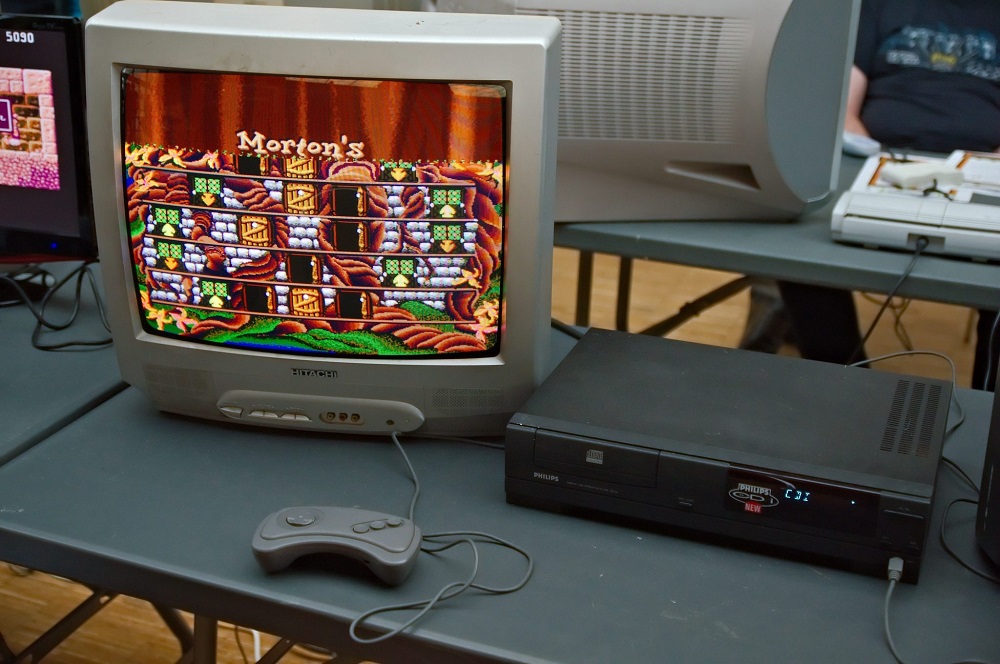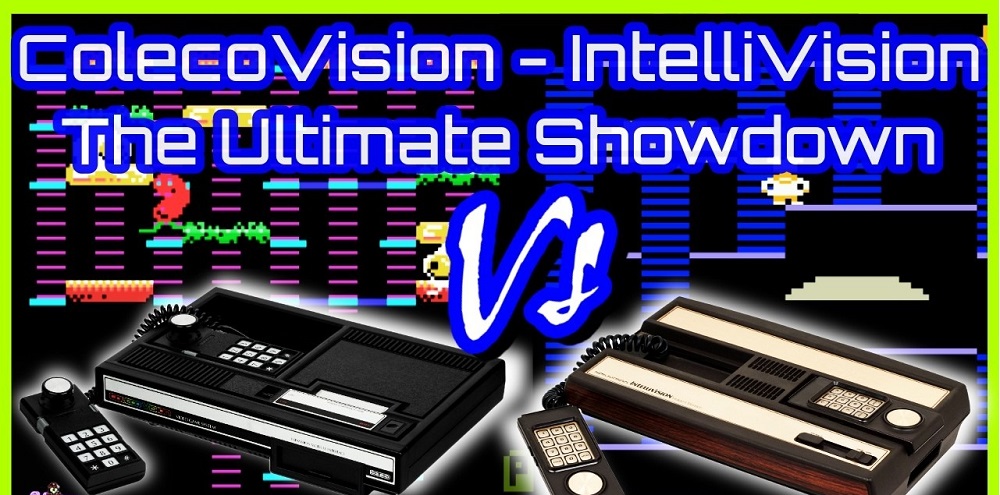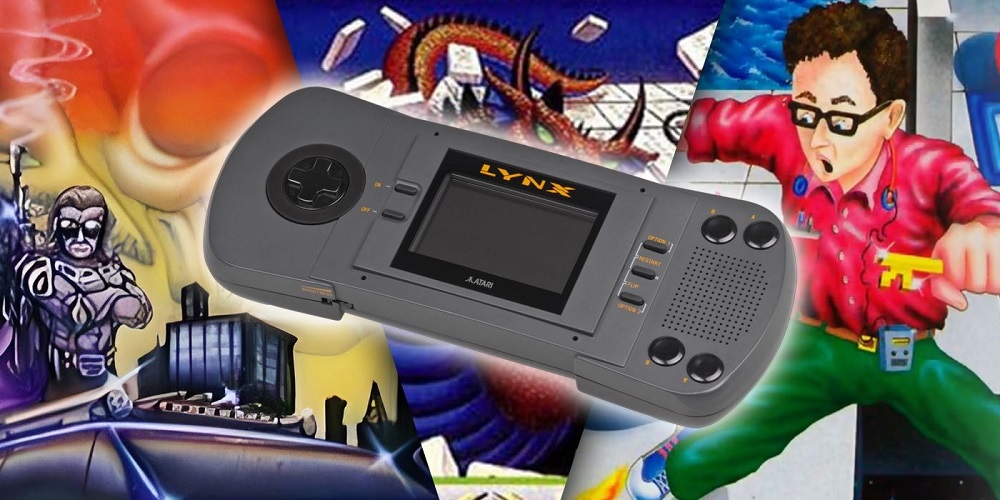In the early 1990s, the video game industry stood on the brink of change.
CD-ROM technology was new, mysterious, and full of promise — offering vast storage, full-motion video, and near-limitless potential.
Among the many companies racing to harness this new power was Philips, the Dutch electronics giant best known for TVs and audio equipment.
Its vision? To create not just a game console, but a multimedia machine that would revolutionize how we watched, learned, and played.
The result was the Philips CD-i (Compact Disc Interactive) — a device that promised to bring the future into your living room, but instead became one of gaming’s most notorious failures.
At Oldies Nest, we revisit this ambitious yet forgotten console — exploring what went wrong, why it mattered, and how its legacy still echoes today.
The Birth of a Multimedia Revolution
In 1986, Philips and Sony collaborated on the Compact Disc-Interactive format, aiming to expand the use of CDs beyond music.
By 1991, the CD-i player finally launched, marketed not as a game console but as a family entertainment system.
It was designed to:
- Play movies and music
- Display educational programs
- Run interactive games and multimedia discs
The concept aligned with what we explored in When Games Came on Discs: The CD-ROM Revolution — a time when the industry was obsessed with “multimedia.”
But while CD-ROM PCs were flexible and powerful, the CD-i tried to do it all without being a computer.
And that, ultimately, became its downfall.
The Technology: Ambitious but Flawed

At launch, the Philips CD-i was impressive on paper.
It used a Motorola 68070 processor and could display up to 16.7 million colors, with stereo sound and video playback — cutting-edge features for 1991.
Key Features
- Interactive CD-ROMs that combined audio, text, and video
- Infrared remote control with optional gamepad support
- Upgradable modules for digital video (the CD-i 220 model added MPEG decoding)
However, its high price — $700 at launch — immediately alienated consumers.
And while its hardware could handle educational titles, it wasn’t optimized for fast-paced games.
Developers struggled to make the CD-i perform like a proper console, resulting in sluggish gameplay and clunky controls.
The Games: The Good, the Bad, and the Infamous
The CD-i’s game library became its biggest weakness — and its greatest infamy.
Philips positioned it as a mature entertainment device, so its lineup mixed educational titles, interactive movies, and a few traditional games.
Notable Titles
- Hotel Mario (1994) – infamous for its awkward cutscenes, though ironically iconic today.
- The Legend of Zelda: The Wand of Gamelon and Faces of Evil – licensed from Nintendo after their failed partnership on a SNES CD add-on.
- Burn: Cycle (1994) – a cyberpunk FMV adventure that’s one of the system’s few genuinely good titles.
- Voyeur (1993) – a mature, voyeuristic thriller that pushed the boundaries of early FMV gaming.
The problem? These games felt more like interactive experiments than entertainment.
While Burn: Cycle showed flashes of brilliance, most others felt like technical demos packaged as products.
The infamous Zelda games, now meme legends, became symbols of what happens when ambition meets poor execution.
The Nintendo Connection: A Partnership Gone Wrong
The CD-i’s strangest chapter began with Nintendo.

Originally, Philips was supposed to collaborate with Nintendo to develop a CD-ROM add-on for the Super Nintendo Entertainment System.
But after negotiations collapsed, Nintendo turned to Sony — leading to the birth of the PlayStation.
However, Philips retained limited rights to use Nintendo’s characters, which is how the world ended up with those infamous Zelda and Mario games.
Ironically, while The Power of PlayStation: Sony Enters the Game chronicled Sony’s rise from that same fallout, Philips’ CD-i became a cautionary tale instead.
Marketing Missteps and Identity Crisis
The CD-i’s biggest problem wasn’t just its performance — it was confusion.
Was it a game console? A learning tool? A movie player? Philips itself couldn’t decide.
The company’s ads targeted everyone — parents, educators, movie lovers — and in doing so, appealed to no one.
Without a clear audience or strong first-party support, the CD-i was overshadowed by competitors like the Sega CD and later the Sony PlayStation, which understood their audiences better.
Sega made similar mistakes, but with a stronger gaming foundation to recover from. Philips, however, had no such fallback.
The Multimedia Trap
The early 90s were full of buzzwords — interactive, multimedia, digital video.
The CD-i was built around all of them, but the public wasn’t ready.
CD-ROM PCs soon overtook the CD-i, offering better graphics, faster performance, and more versatile software.
By 1995, the CD-i’s attempt to bridge education, cinema, and gaming looked outdated compared to emerging 3D consoles.
The irony? The CD-i’s core idea — a unified device for movies, music, and games — would later become a reality in systems like the PlayStation 2 and Xbox 360.
It was right about the future — just not ready for it.
Legacy: The Console That Refused to Die
Despite poor sales, the CD-i lingered in production until 1998, mostly in Europe and for business use.
Philips repurposed the technology for kiosks, museums, and training software.
Collectors now see the CD-i as a fascinating relic — the last gasp of the “multimedia era.”
Complete units with digital video modules and original packaging can fetch $400–$600, while rare titles like Burn: Cycle or Hotel Mario have become cult classics.
Its story reflects the growing pains of a medium in transition — from simple games to cinematic experiences.
Why the CD-i Still Matters
The Philips CD-i is often mocked, but it deserves recognition for what it tried to do.
It pioneered full-motion video storytelling, brought licensed characters into new territory, and experimented with the boundaries between learning and play.
It also serves as a reminder that innovation doesn’t always mean success, and that being early can be just as fatal as being late.
More importantly, the CD-i’s failures helped shape the industry’s future:
- It showed the need for focus and identity in console design.
- It proved that multimedia alone couldn’t carry a platform without great games.
- And it demonstrated how collaboration missteps — like the failed Nintendo deal — can redirect the course of gaming history.
Conclusion: A Forgotten Dream in a Shiny Disc
The Philips CD-i was neither the worst console ever made nor the best idea poorly executed — it was both.
It stood at the crossroads of ambition and confusion, innovation and incompetence.
It tried to predict the future but got lost trying to build it too soon.
Yet, when you power one on today — watching those grainy FMV cutscenes flicker to life — you can still feel a spark of wonder.
A glimpse of a time when gaming’s boundaries were undefined, and every company dared to dream bigger.
Because sometimes, failure tells a story more powerful than success — and the CD-i’s story is one worth remembering.




